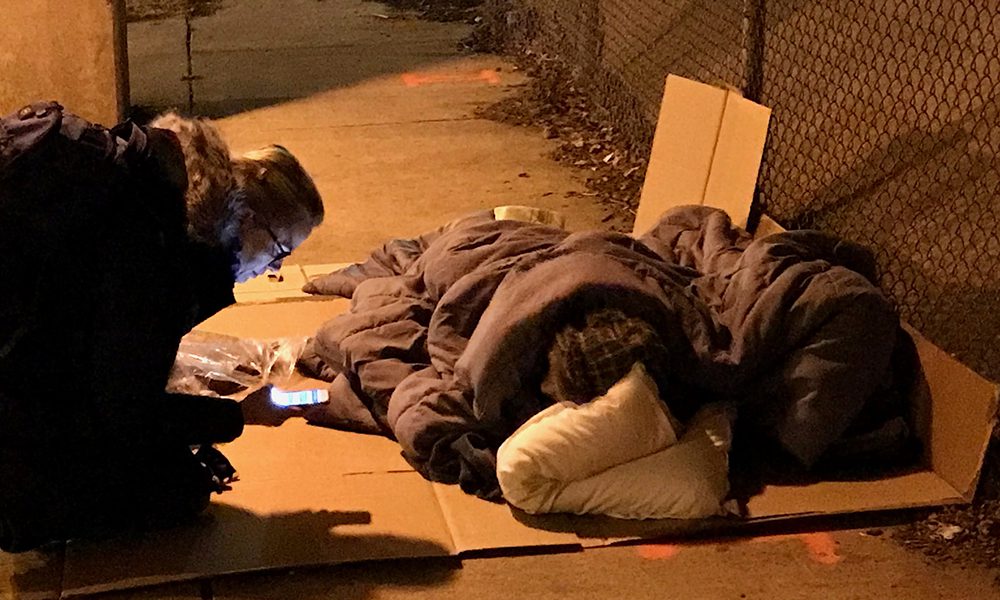Perspective: Homelessness in the time of pandemic

Homeless neighbors are vulnerable to the coronavirus. We need to protect them, for their sake—and ours.
 If there has ever been an object lesson on why housing matters and why we must prioritize providing it for people who don’t have a place to live, this latest crisis should teach us. Charlotte’s homeless population is at particular risk as we collectively adjust to COVID-19.
If there has ever been an object lesson on why housing matters and why we must prioritize providing it for people who don’t have a place to live, this latest crisis should teach us. Charlotte’s homeless population is at particular risk as we collectively adjust to COVID-19.
Work to end homelessness takes on new urgency in a pandemic, for reasons of both personal and community safety. The lack of housing makes social distancing difficult, if not impossible. Many individuals experiencing homelessness are especially vulnerable to the virus because of high rates of underlying health conditions. Simple necessities to maintain hygiene and prevent the spread of any infection are not regularly available (it’s hard to wash your hands for 20 seconds if you don’t have a sink).
Emergency shelters, which often had to turn people away or overcrowd before COVID-19, must now consider further rationing to prevent the spread of the virus, which could further overwhelm our health system.
As California and New York announce their first homeless deaths from COVID-19, communities across the country are bracing for the virus to spread through encampments and are trying to quickly adjust to reduce spreading through emergency shelters.
Right now, agencies addressing homelessness need:
-
Flexible operating funds
-
Sanitary, temporary housing to address shelter overflow and enable social distancing
-
Capacity to test those who enter and reside in shelter
-
Supplies and space to quarantine those who get the virus
-
PPE (personal protective equipment) for outreach and other direct service workers who will be in contact with individuals who contract the virus
-
The items in short supply for everyone – toilet paper, bottled water, hand sanitizer, and other forms of disinfectant.
Urban Ministry Center/Men’s Shelter of Charlotte has posted specific needs here. You can donate to the Salvation Army Center of Hope here.
I’ve spent the last five years working with a research team to understand our community’s effort to end chronic homelessness and the impact it has had on people experiencing it.

We will soon release the findings from our work, but in short, the results are not especially surprising: Providing housing for individuals experiencing homelessness ends homelessness, improves people’s lives and reduces the use of community services.
But perhaps the most important outcome that we didn’t articulate was that the formerly homeless individuals now housed by Housing First Charlotte-Mecklenburg—1,011 as of January—can follow the local, national and international guidance that will keep them and everyone safer.
Homeless Charlotteans are facing the same issues we are facing, but multiplied. Their risk is our risk—we have never been so connected to those experiencing homelessness, whether we like it or not. Our health care system is already likely to face an increasing strain in the coming months, and preventing new waves of infection in vulnerable populations, including our homeless residents, will be key to our whole community’s safety.
Today, we must work with our direct service agencies to address immediate needs. But we can’t lose sight of the ongoing need for housing for those who literally don’t have it. As researchers have noted and as Liz Clasen-Kelly stated in an email to Urban Ministry Center/Men’s Shelter of Charlotte supporters, housing is health care.
As it turns out, it’s our health care, too.
Lori Thomas is UNC Charlotte Urban Institute’s director of research and faculty engagement. She also serves as the interim director of the Institute for Social Capital. Since coming to UNC Charlotte in 2008, Thomas has focused her research mainly on issues of housing and homelessness – topics at the forefront of local civic discussions in recent years, as rising housing costs and stagnant wages have put stable housing out of reach for thousands of local residents.
Photo: Volunteer interviews homeless residents for 2018 point-in-time count, Jan. 31; photo by Peter Safir